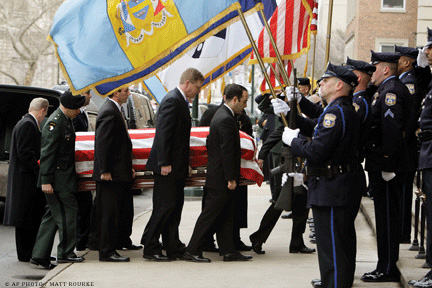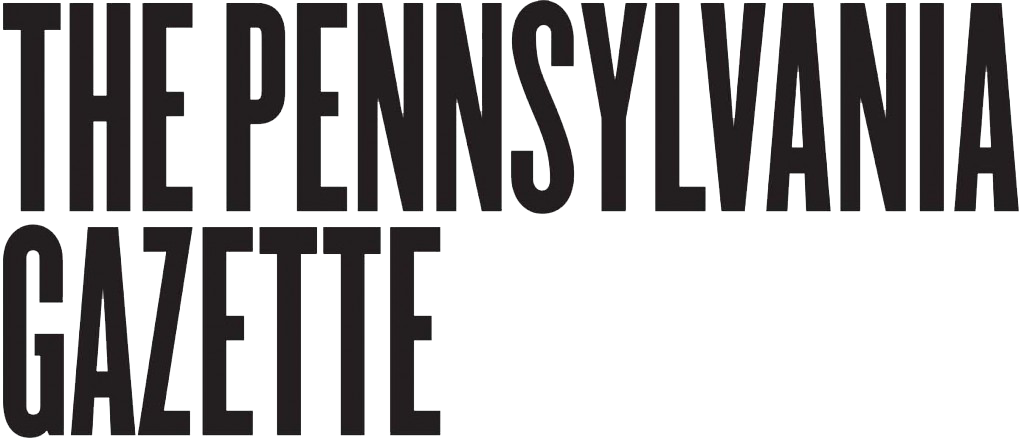
“When you go to war, people die, and sometimes they don’t come back,” John Pryor said as 2008 entered its final month.
“But you’re going to come back,” Georgianna Telford remembers answering. Pryor had done it once already. The director of HUP’s trauma program had volunteered at the 344th Combat Support Hospital in Abu Ghraib, Iraq, in 2006.
Two years later, against the wishes of many of his closest friends and family members, Pryor had decided to go back. He had no illusions about what lay in wait.
“But the reality of war is death,” he told Telford, the lead trauma nurse practitioner at HUP.
“Well then, that’s another reason I don’t want you to go.”
It wasn’t good enough. “I’m able to help people who would have died, live,” Pryor said.
It was the last conversation the pair would ever have. On December 6, the surgeon described as “the spirited lifeblood” of his department shipped out for a second tour of duty, this time with a frontline surgical unit in Mosul. Less than three weeks later, a mortar round exploded in the compound and a piece of shrapnel spun out of the blast. Pryor was in its path. Back home in New Jersey, his wife and three small children passed the morning without getting the habitual phone call that usually came before noon. It was Christmas Day.
John Pryor was 42 years old. The Army posthumously awarded him a Bronze Star and a Purple Heart.
In the days after a packed memorial service at Philadelphia’s Cathedral Basilica of Saints Peter and Paul in January, friends and colleagues remembered a man whose sense of duty sometimes exceeded the ability of his loved ones to understand it.
“He just couldn’t tolerate living his comfortable blessed life here, knowing that we had young men and women protecting all of us without them getting the best care,” said John Chovanes, a trauma surgeon who first encountered Pryor at Ground Zero in New York, where both men took part in rescue operations on September 11, 2001.
In the expectation that he would also treat Iraqi civilians and children during his tours, Pryor studied Arabic—and gained some notoriety for dropping pop quizzes on other Philadelphia doctors in the Army Reserve.
“In the middle of the night, he would make sure I knew how to say hello, doctor, pain—he would always pimp me, as we say in medicine, grill me,” Chovanes laughed. “John was such a brilliant guy. And of course, what did he have an affinity for? The Middle Eastern food truck outside HUP, so he could talk Arabic to the guys, or so they could laugh at him trying to speak Arabic. And he’d come back with these big plates of food.”
Joseph Savino C’80 GM’87, a professor of anesthesiology and critical care, said: “One word I would use would be generosity. He always gave himself to the person lying on the operating room table … And he didn’t educate in absentia. Some people believe medical education is about giving residents freedom to operate independently. But that’s not the case here. Our residents are elbow-to-elbow with attending physicians, and John was tremendous in that venue.”
Telford echoed the sentiment, saying that Pryor was a surgeon who inspired uncommon affection and loyalty not just from fellow physicians and trainees, but from the entire trauma staff. “The whole group that I work with is a very unique team,” Telford said. “And it comes from his example. And because of his respect for us, it trickles down from the top: to the fellows, to the residents, to the staff. He was like a pillar for us.”
Pryor was regarded as a talented surgeon and masterful teacher for whom complacency was an alien notion. “One of the things he would always grill me on,” fellow combat surgeon John Chovanes recalled, “was how to remove unexploded ordnance, which is obviously a pretty hairy thing to do. And what do you know, when I’m in [combat] theater, I had some unexploded ordnance to remove, and I can tell you, that probably helped save my life and my patient’s life.”
In opinion articles for The Philadelphia Inquirer and The Washington Post, Pryor wrote movingly about the intolerable grief that consumed him when he failed to save wounded soldiers in Iraq, and also decried the “triage of compassion and empathy” by which Americans ignore a level of domestic gun violence that “sometimes makes Baghdad seem like a quiet city in Iowa.”
A quotation by Albert Schweitzer hung on the wall of his office: “Seek always to do some good, somewhere … Even if it’s a little thing, do something for those who need help, something for which you get no pay but the privilege of doing it.”
As the cold grip of January glazed the Schuylkill River with ice, Pryor’s colleagues and friends in the HUP trauma center struggled to fulfill the spirit of that creed.
“There’s a hole,” said surgery chair Jim Mullen M’67. “There’s an emptiness. But I think his inspiration, even though he isn’t physically here, has rallied the troops. They were back working at high gear a day after his funeral, which was very tough for them. But they were. So they’re carrying on his tradition. He will probably inspire that group for quite a long time.”
—T.P.
A fund has been established to help John Pryor’s wife and children. Donations can be made to: UPHS—Dr. John Pryor Fund, 3535 Market St., Suite 750, Philadelphia, PA 19104-3309.

